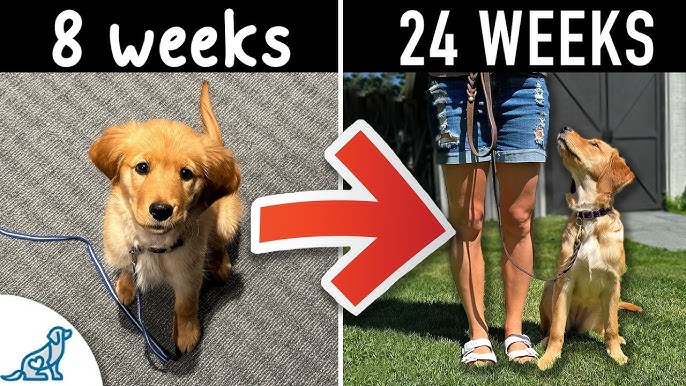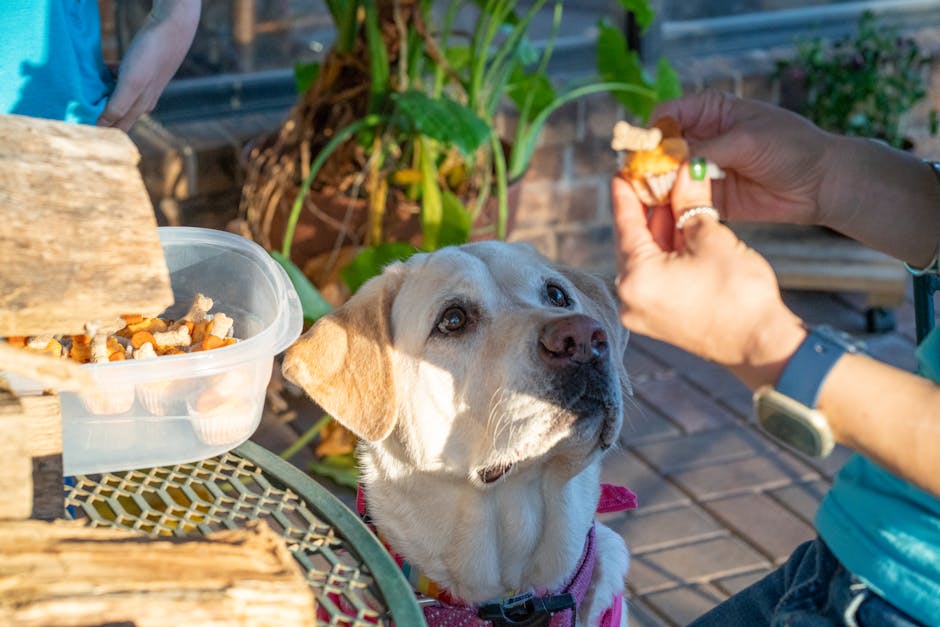Are you wondering if your dog really needs obedience training? You might think your furry friend already listens well, but there’s more to it than just basic commands.
Training can transform your dog’s behavior, making daily life easier and more enjoyable for both of you. Imagine fewer frustrating moments, better control in tricky situations, and a stronger bond between you and your pet. Keep reading to discover how obedience training could change everything—and why it might be exactly what your dog needs right now.
Signs Your Dog May Need Training
Recognizing the signs that your dog may need obedience training can make a huge difference in your relationship. Training isn’t just about teaching tricks; it’s about communication and safety. If your dog struggles with certain behaviors, it might be time to consider professional guidance or a structured training plan.
Ignoring Basic Commands
Does your dog often ignore simple commands like “sit,” “stay,” or “come”? This can be frustrating and even dangerous in some situations. When your dog doesn’t respond, it’s a clear sign that they might need focused training to improve their listening skills.
Try calling your dog in a busy park or near distractions. If they don’t come consistently, training can help build reliability. You want your dog to obey not just at home, but everywhere.
Excessive Barking Or Whining
Is your dog barking or whining constantly, even when there’s no clear reason? This behavior often signals anxiety, boredom, or a need for attention. If it’s happening regularly, training can teach your dog how to express themselves calmly.
Think about the last time your dog barked non-stop. Did it annoy neighbors or stress you out? Training can reduce noise and improve your dog’s comfort by providing better ways to communicate.
Destructive Behavior
Chewing furniture, digging up the garden, or shredding shoes are common signs your dog may need training. Destructive acts usually mean your dog is bored, anxious, or not getting enough exercise. Training offers tools to redirect this energy into positive activities.
Have you caught your dog chewing something valuable? Instead of punishment, teaching them what is acceptable to chew can solve the problem. This not only protects your belongings but also strengthens your bond.

Credit: sitmeanssit.com
Benefits Of Obedience Training
Obedience training offers more than just a well-behaved dog. It creates a foundation for everyday interactions that make life easier and safer for both you and your pet. Understanding the benefits can help you decide if training is the right step for your dog.
Improved Communication
Training teaches your dog to understand your commands clearly. This reduces confusion and frustration on both sides. When your dog responds to simple cues like “sit” or “stay,” it’s easier to manage their behavior anywhere.
Think about how much smoother walks become when your dog doesn’t pull or dart after distractions. You’ll find that consistent communication builds trust and makes daily routines more enjoyable.
Enhanced Safety
Obedience training can literally save your dog’s life. Commands like “come” and “leave it” prevent dangerous situations such as running into traffic or eating harmful objects. You gain peace of mind knowing your dog can listen even in stressful moments.
Have you ever worried about your dog’s reaction around new people or animals? Training helps you control those interactions before they escalate into trouble.
Strengthened Bond
Spending time training your dog strengthens your connection. It’s a chance to share positive experiences and celebrate small successes together. This shared effort deepens your relationship beyond just companionship.
Many owners notice their dogs become more confident and eager to please after training. How could building this kind of teamwork change the way you and your dog enjoy each day?
Types Of Obedience Training
Obedience training helps dogs learn good behavior and follow commands. Different types of training fit different dogs and owners. Choosing the right kind can make learning easier and more fun. Training can happen in groups, one-on-one, or online. Each style has unique benefits and suits different needs.
Group Classes
Group classes gather several dogs and owners in one place. Dogs learn to listen with distractions around. Social skills improve as dogs meet others. Trainers give guidance to the whole group. These classes are often affordable and fun. A set schedule helps keep training consistent.
Private Sessions
Private sessions focus on one dog and owner only. Trainers customize lessons to suit specific needs. These sessions allow faster progress and personal attention. Owners get direct feedback and hands-on help. Private training can solve behavior problems more easily. Sessions fit better for busy schedules.
Online Courses
Online courses offer flexible learning from home. Videos and materials teach commands and techniques. Owners can train at their own pace. Online options often cost less than in-person classes. Some courses include live chats with trainers. This type suits owners with limited local options or tight schedules.
Choosing The Right Trainer
Choosing the right trainer for your dog is key to successful obedience training. The right trainer helps your dog learn good behavior and builds a strong bond between you both. A good trainer understands your dog’s needs and personality. They use clear, kind methods that make learning fun and effective.
Finding a skilled trainer takes some research. Check their background, how they train dogs, and what past clients say about them. This helps ensure your dog gets the best care and training experience possible.
Certifications To Look For
Certified trainers have proven skills and knowledge. Look for credentials from recognized groups such as:
- International Association of Canine Professionals (IACP)
- Certification Council for Professional Dog Trainers (CCPDT)
- American Kennel Club (AKC) Canine Good Citizen Evaluator
These certifications show the trainer follows high standards and ethical practices. They keep learning new techniques to help dogs better.
Training Methods Explained
Trainers use different methods to teach dogs. Common approaches include:
- Positive reinforcement: Rewarding good behavior with treats or praise.
- Clicker training: Using a sound to mark correct actions.
- Balanced training: Combining rewards with gentle corrections.
Choose a trainer whose methods match your values. Avoid harsh or fear-based techniques. Kindness and patience work best for dogs and owners.
Client Testimonials
Reading what other dog owners say about a trainer helps you decide. Good testimonials mention:
- Improvement in dog’s behavior
- Trainer’s communication and support
- Comfort level during training sessions
Happy clients often share stories about lasting changes and positive experiences. This feedback shows how well the trainer connects with dogs and owners alike.
Training Tips For Dog Owners
Training a dog requires focus and care. Good habits form a strong bond between you and your pet. These tips help guide dog owners through the training process smoothly. Clear and simple steps make learning easier for both.
Consistency Is Key
Dogs learn best with steady routines. Use the same commands every time. Practice training sessions daily, even if short. This helps your dog understand what you expect. Mixed signals confuse dogs and slow progress.
Positive Reinforcement
Reward good behavior with treats or praise. This encourages your dog to repeat actions. Avoid punishment; it can cause fear or aggression. Celebrate small wins to build confidence. Positive feedback makes training enjoyable for your dog.
Patience And Persistence
Training takes time. Some dogs learn faster than others. Stay calm and keep trying, even if progress is slow. Repeat exercises regularly to reinforce skills. Patience helps your dog feel safe and motivated to learn.

Credit: backyardpetservices.com
Monitoring Progress
Monitoring progress is key to successful obedience training. It helps you see how well your dog learns and adapts. Tracking changes keeps training focused and effective. It also shows when to try new methods or adjust goals.
Setting Realistic Goals
Set clear and simple goals for your dog’s training. Goals should match your dog’s age, breed, and personality. Small steps work better than big leaps. For example, teaching “sit” before “stay” builds a solid foundation.
Realistic goals prevent frustration for both you and your dog. Celebrate small wins to keep motivation high. Patience and consistency bring steady improvement over time.
Tracking Behavioral Changes
Watch your dog’s behavior closely during training sessions. Note which commands your dog responds to easily. Identify behaviors that need more work. Use a journal or app to record progress.
Tracking helps spot patterns and triggers for unwanted behaviors. It also shows how your dog reacts to rewards and corrections. Regular review of notes guides your next training steps.
Adjusting Techniques As Needed
Be ready to change training methods if progress slows. Some dogs learn better with treats; others prefer praise or play. Adjust timing and tone of commands to fit your dog’s style.
Try new exercises or break tasks into smaller parts. Flexibility keeps training effective and fun. Don’t hesitate to seek advice from trainers if needed.

Credit: www.petscare.com
Frequently Asked Questions
What Are Signs My Dog Needs Obedience Training?
If your dog shows disobedience, excessive barking, or aggression, it likely needs training. Training improves behavior and strengthens your bond.
At What Age Should I Start Training My Dog?
Start training as early as 8 weeks old. Early training builds good habits and prevents behavior problems later.
How Long Does Basic Obedience Training Take?
Basic training usually takes 4 to 8 weeks with consistent daily sessions. Results improve with patience and positive reinforcement.
Can Obedience Training Fix Aggressive Behavior In Dogs?
Yes, training helps manage aggression by teaching control and social skills. Professional guidance is recommended for severe aggression.
Conclusion
Obedience training helps dogs behave better and stay safe. It builds trust between you and your dog. Training also makes daily life easier and more fun. Every dog can learn, no matter the age or breed. Consistent training brings good habits and stops bad ones.
Think about your dog’s needs and your lifestyle. Start training early to see the best results. A well-trained dog feels happy and confident. Simple steps lead to a stronger bond with your pet. Obedience training is a smart choice for any dog owner.






